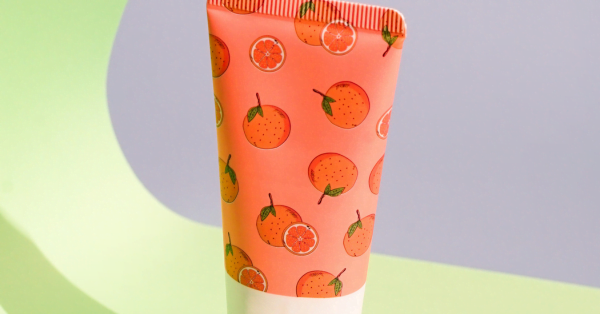- What is Affiliate Marketing and How Does It Work? - July 19, 2024
- Unlock Success in Business with Jessica’s Marketing Lectures - July 12, 2024
- What Does the 2,500-page Google Leak Means for SEO? - June 27, 2024
By affecting how your audience sees and interprets your message, colors can help your brand stand out from those of your rivals in marketing. Your audience won’t be able to easily disregard your print and promotional materials if you flawlessly integrate your language and color strategy into the design.
The human brain is greatly influenced by color. They have the power to arouse specific emotions and feelings, impact our moods, and even change our behavior.
In this article, we will understand how the psychology of colors in marketing can help firms develop effective branding strategies and establish more meaningful connections with customers.
The Science Behind Colors and Emotions

Colors have the ability to elicit emotional responses due to the way they are perceived and processed by the brain. There are several factors that contribute to this, including personal experiences, cultural associations, and physiological responses.
Overview of Color Meanings in Marketing
- Red: Associated with energy, passion, and urgency. It can create a sense of excitement and stimulate impulse purchases. It is often used to grab attention and create a sense of urgency.
- Blue: Represents trust, reliability, and calmness. It is frequently used by businesses in industries like finance or technology to convey a sense of security and professionalism.
- Yellow: Symbolizes optimism, happiness, and creativity. It can attract attention and is commonly used to promote children’s products or highlight discounts.
- Green: Associated with nature, eco-friendliness, and freshness. It is often used for brands that focus on sustainability and health. Green can also convey a sense of wealth and prestige.
- Orange: Represents enthusiasm, excitement, and vitality. It is often used to create a sense of urgency and encourage impulsive buying decisions.
- Purple: Signifies luxury, creativity, and sophistication. It is commonly used by high-end brands to evoke a sense of exclusivity and elegance.
- Pink: Often associated with femininity, tenderness, and romance. It is commonly used in marketing aimed at female audiences or to depict products related to beauty or fashion.
By understanding the ways in which colors elicit emotional responses, businesses can use colors strategically in their branding and marketing to influence how customers feel about their products or services. By choosing colors that align with their brand identity and evoke the desired emotional response, businesses can create more effective marketing campaigns and ultimately drive consumer behavior.
Color Meanings Across Cultures

Cultural variations in color associations are an important aspect to consider when developing marketing strategies or branding efforts targeting diverse audiences. Different cultures have unique color associations and meanings, which can significantly impact consumer perceptions and behaviors.
It is important for businesses to research and understand the cultural associations and meanings of colors in the regions or communities they are targeting. This knowledge will allow them to adapt their marketing strategies and color choices accordingly to ensure that they resonate positively with their intended audiences, and avoid potential cultural misunderstandings or offensiveness. By being culturally sensitive and aware, businesses can effectively engage with diverse audiences and build strong connections with their target markets.
Using Colors to Reflect Brand Identity

Creating a cohesive color palette is essential for maintaining a consistent and visually appealing brand identity. A well-designed color palette helps to establish brand recognition, evoke the desired emotions and perceptions, and create a cohesive visual experience across various marketing materials.
Here are some case studies of successful branding through colors:
- Coca-Cola: Coca-Cola’s red branding color has been synonymous with the brand since the early 1900s. The color red is bold, dynamic, and creates a sense of excitement, which aligns with Coca-Cola’s brand personality and values.
- Tiffany & Co.: Tiffany & Co.’s famous “Tiffany Blue” shade is one of the most recognizable branding colors in retail history. The shade was inspired by the turquoise gemstones popular during the 1800s, and its use in Tiffany’s branding has become a symbol of luxury, elegance, and sophistication.
- Cadbury: Cadbury’s iconic purple branding color was introduced in the 1920s as a way to stand out from its competitors and create a memorable brand identity. The color was chosen because it represented luxury, indulgence, and uniqueness. Cadbury’s purple packaging has since become synonymous with the brand and has even led to Cadbury securing a royal warrant as a supplier to the British monarchy.
These case studies demonstrate how specific color choices can influence the perception and success of a brand. By using colors that align with your brand’s values and personality, you can create a sense of recognition, trust, and emotional connection with your target audience.
Color and Website Design

Color plays a major role in interface design since effective use of color is crucial for projecting a positive image to your clients. Like no other kind of communication, it instantly conveys a message, stimulating all the senses.
Color contrast is a crucial aspect of UX design that can significantly impact how users perceive and interact with your digital products. By considering accessibility, legibility, attention guidance, visual hierarchy, and emotional impact, you can create a visually pleasing and user-friendly experience that caters to a wide audience.
The art of balancing colors is not just about personal preference or aesthetics; it’s about creating an inclusive and engaging design that serves the needs of all users. Take the time to research color contrast guidelines, experiment with different combinations, and test your designs to ensure an optimal user experience through contrast.
Here are some examples of websites that use effective color schemes:
- Spotify: Spotify uses a vibrant green color scheme that is instantly recognizable and sets them apart from their competitors. The green color evokes a sense of growth, renewal, and harmony, which aligns with Spotify’s brand values of providing a dynamic and fresh music experience.
- Dropbox: Dropbox uses a blue and white color scheme that evokes a sense of calmness and dependability. The blue color instills a sense of trust and professionalism, which is important for their cloud-based storage service. Furthermore, the simple and clean design of the website enhances the user experience.
- Slack: Slack uses a combination of colors, including shades of purple, green, and blue, which create a visually appealing and vibrant design that stands out from the crowd. The color contrast in their scheme also assists in visual hierarchy, helping users navigate through their product.
- Mailchimp: Mailchimp uses a bright yellow color scheme that conveys a sense of warmth, friendliness, and positivity that aligns with their cheerful and customer-centric brand values. The yellow color used on their website also draws attention to their primary call-to-action buttons.
These websites stand out for their effective use of color schemes. By using color psychology and consistent color schemes throughout, each of the brands achieves an aesthetic that properly reflects their core values and user experience.
Color in Advertising and Brand Messaging

Color is a crucial element of print and digital advertisements and can significantly impact the success of an advertisement’s effectiveness. It plays a crucial role in both print and digital advertising by impacting attention, moods, and purchasing decisions. From strictly consistent brand guidelines to the strategic use of colors for a specific message, the impact of color cannot be underestimated when creating effective advertisements.
Color is also an essential component of marketing communication as it can play a vital role in attracting customers and creating brand recognition. By using different colors in marketing copy and graphics, you can evoke specific emotions and add meaning to your message.
A/B testing is a valuable method for optimizing color choices in marketing materials, including headlines, buttons, and graphics.It enables you to contrast two iterations (A and B) of a design piece in order to ascertain which performs better in terms of user engagement, conversions, or other metrics.
Call-to-Action (CTA) Buttons and Color Choices
It’s important to note that the effectiveness of a CTA color can vary based on the surrounding colors and the overall design of your website or marketing materials. Furthermore, what works for one brand might not be effective for another. So, it’s always a good idea to A/B test different color options to determine what works best for your specific audience and goals.
Remember, the key is to choose a color that not only stands out but also complements your brand identity, resonates with your target audience, and aligns with the overall design of your website or marketing materials.
Color in Product Packaging and Retail Environments

The influence of color on purchase decisions is a fascinating area of study in marketing.
The Power of Color
- Colors have the ability to evoke emotions and affect our perception and behavior.
- Different colors can elicit different reactions and associations in individuals.
Designing packaging that stands out on shelves is crucial for any product to catch the attention of potential customers. By focusing on clear branding, eye-catching design, and easy-to-understand communication, you can create product packaging that catches the attention of potential customers and stands out on the shelves.
Gender and Color Preferences
Addressing gender bias in color selection is an important consideration when designing products and marketing materials. It’s important to be sensitive to the fact that color preferences can still vary among individuals. By adopting an inclusive approach and avoiding gender biases in color selection, you can create a more welcoming and inclusive environment for your customers.
Overcoming Cultural Biases and Stereotypes
When it comes to adapting color choices for diverse audiences, it’s essential to consider the different cultural backgrounds, preferences, and visual abilities of your target audience. Here are some tips to help you make inclusive color choices:
- Research and understand your audience
- Use a diverse color palette
- Consider accessibility
- Test and gather feedback
- Be open to adapting and evolving
Practical Tips for Implementing Color Psychology in Your Marketing

Color psychology is a powerful tool that English-Spanish advertising agencies can use to help your business stand out and effectively communicate with your target audience. You can leverage their expertise in understanding the nuances of both languages and cultures. They can help you choose the right color palette and create impactful advertisements that resonate with your target audience, ultimately helping your business attract and engage customers effectively.
It’s essential to maintain a cohesive and consistent color scheme across all your marketing channels to reinforce your brand identity. Experiment with different color combinations, monitor the performance of your campaigns, and adjust accordingly.
Monitoring and analyzing the impact of color changes in your marketing efforts is crucial to understanding how they affect your audience and making data-driven decisions. Here’s a guide on how you can monitor and analyze the impact of color changes:
- Define your goals
- Set a baseline
- A/B testing
- Track relevant metrics
- Collect qualitative feedback
- Iterate and optimize
- Continuously monitor and analyze
By following these steps, you can assess the impact of color changes on your marketing channels and make informed decisions to optimize your strategies. It’s important to strike a balance between data-driven insights and creative intuition when incorporating colors into your marketing efforts.
Conclusion
Overall, the impact of colors in marketing on consumer behavior cannot be underestimated. Colors have the power to influence emotions, shape perceptions, and create strong associations with brands. By strategically utilizing colors in marketing campaigns, businesses can effectively capture the attention and interest of their target audience, ultimately driving consumer behavior and boosting sales.
Remember, the effective use of color in marketing requires thoughtful consideration of your target audience, brand values, and desired message. It’s essential to conduct research, test different color combinations, and analyze the impact of color choices on consumer behavior and perception. By harnessing the power of color, you can create a compelling and memorable marketing experience for your audience.
So, embrace experimentation and testing. Start small by making changes to the color elements in your marketing materials and tracking the results. Over time, you will develop a stronger understanding of the impact of color psychology on your brand’s success, allowing you to consistently grow and improve your approach.
The specialists at SW Marketing and Consulting can assist you and your company in figuring out which colors best appeal to your target market and help you and your company reach your intended results, such as improved engagement, conversions, and brand awareness.
